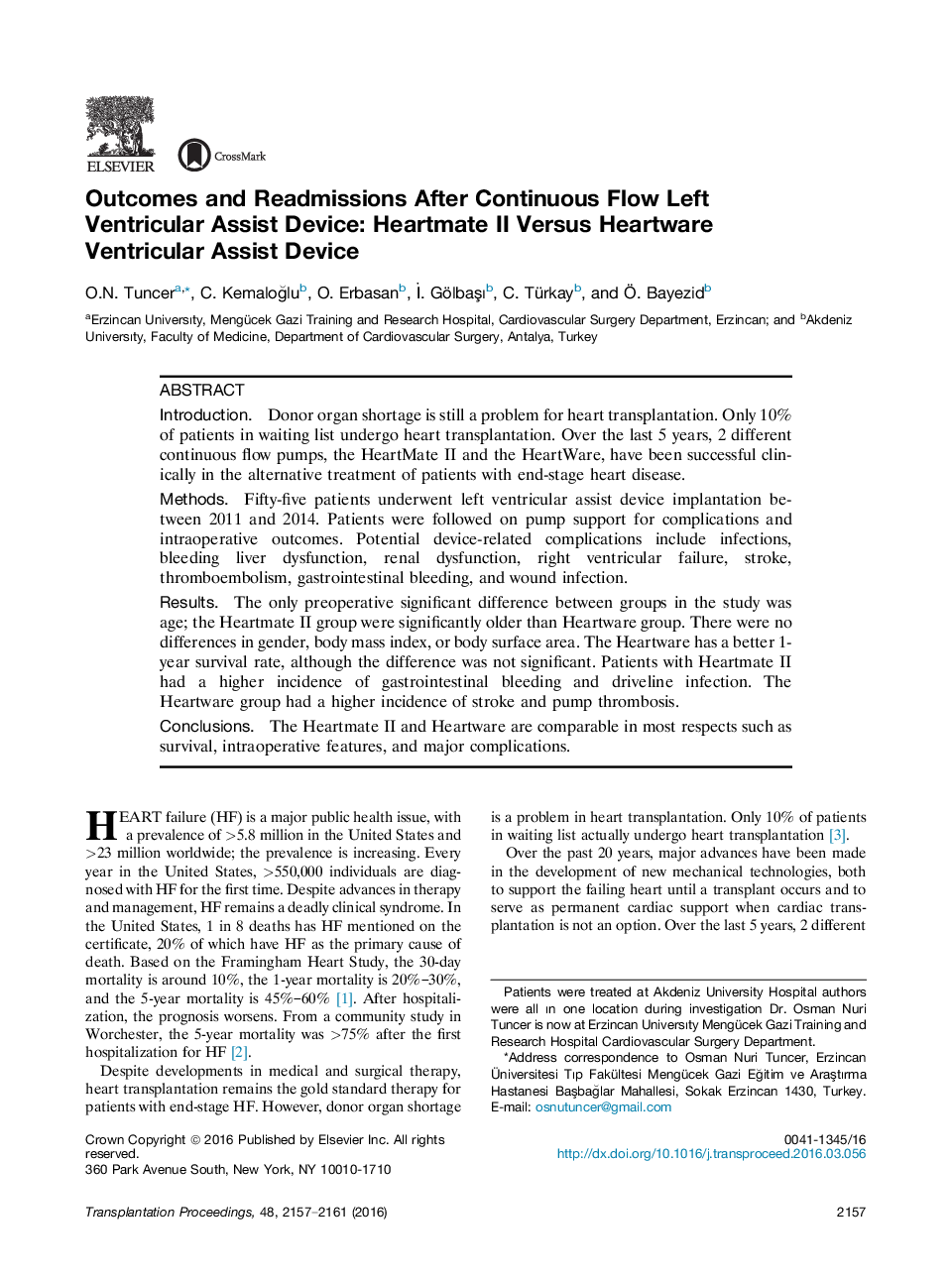| Article ID | Journal | Published Year | Pages | File Type |
|---|---|---|---|---|
| 5729163 | Transplantation Proceedings | 2016 | 5 Pages |
â¢The Heartware has a better 1-year survival rate, but the difference is not statistically significiant.â¢Patients with Heartmate II had a higher incidence of gastrointestinal bleeding and driveline infection.â¢The Heartware group had a higher incidence of stroke and pump thrombosis.
IntroductionDonor organ shortage is still a problem for heart transplantation. Only 10% of patients in waiting list undergo heart transplantation. Over the last 5 years, 2 different continuous flow pumps, the HeartMate II and the HeartWare, have been successful clinically in the alternative treatment of patients with end-stage heart disease.MethodsFifty-five patients underwent left ventricular assist device implantation between 2011 and 2014. Patients were followed on pump support for complications and intraoperative outcomes. Potential device-related complications include infections, bleeding liver dysfunction, renal dysfunction, right ventricular failure, stroke, thromboembolism, gastrointestinal bleeding, and wound infection.ResultsThe only preoperative significant difference between groups in the study was age; the Heartmate II group were significantly older than Heartware group. There were no differences in gender, body mass index, or body surface area. The Heartware has a better 1-year survival rate, although the difference was not significant. Patients with Heartmate II had a higher incidence of gastrointestinal bleeding and driveline infection. The Heartware group had a higher incidence of stroke and pump thrombosis.ConclusionsThe Heartmate II and Heartware are comparable in most respects such as survival, intraoperative features, and major complications.
